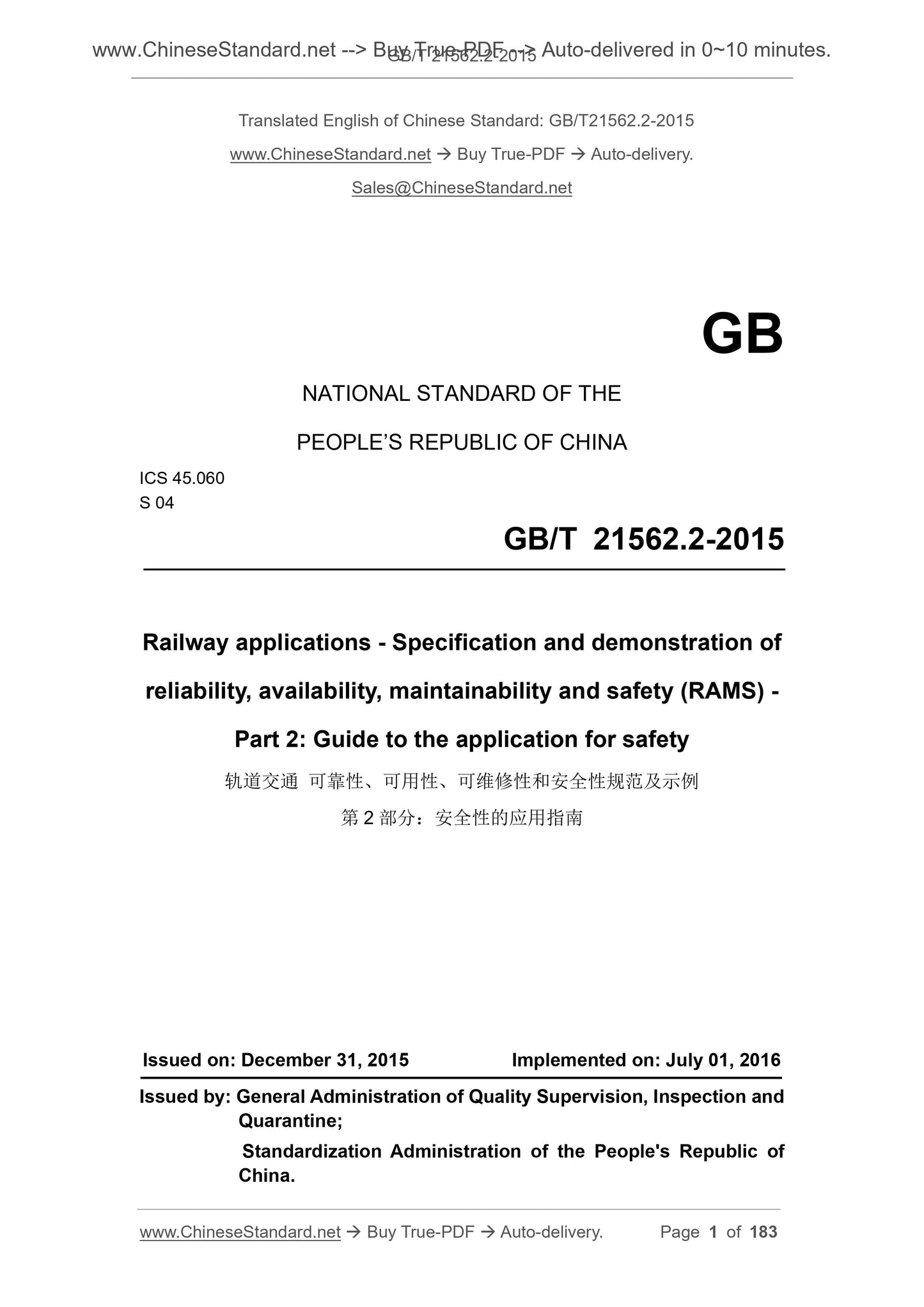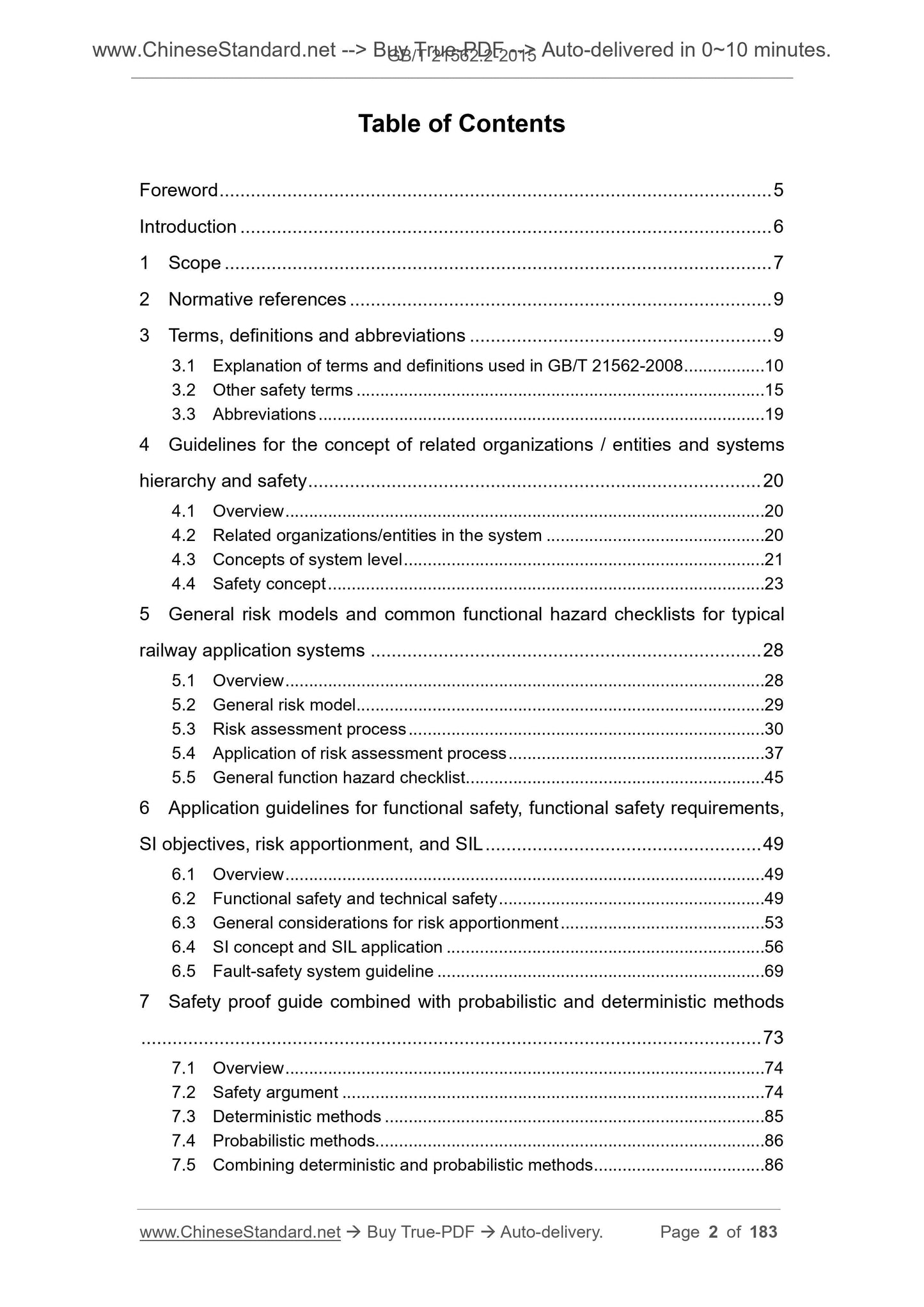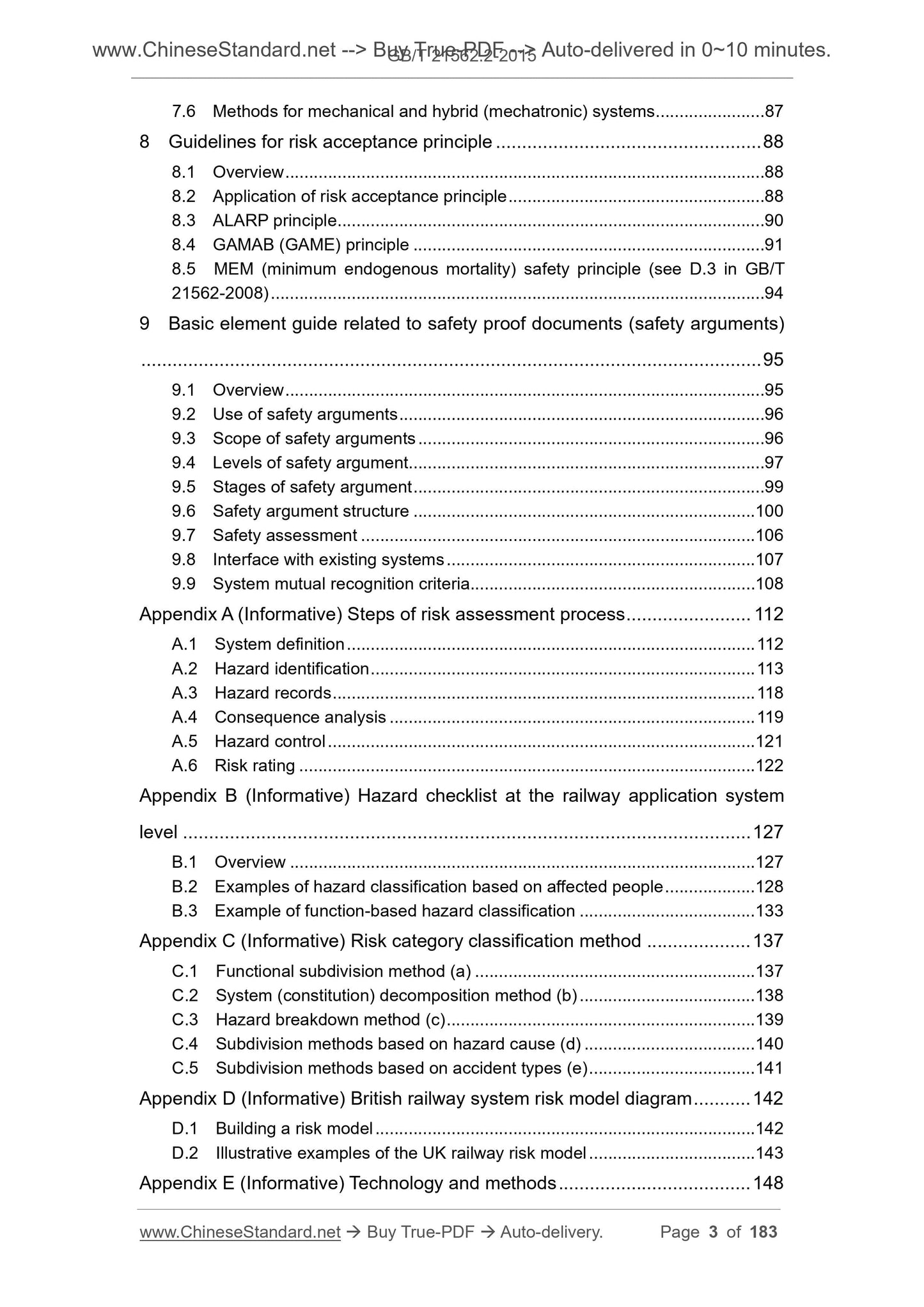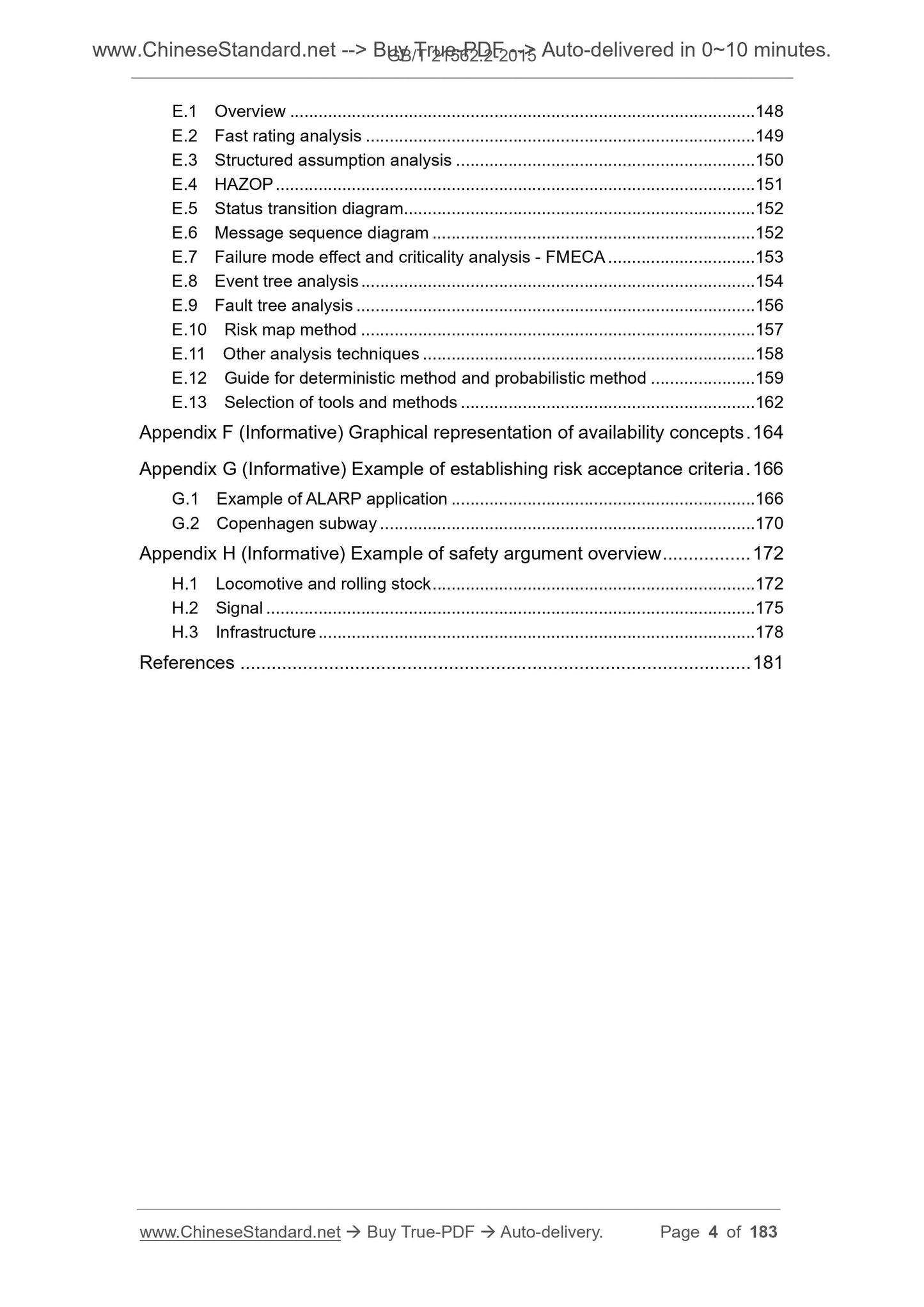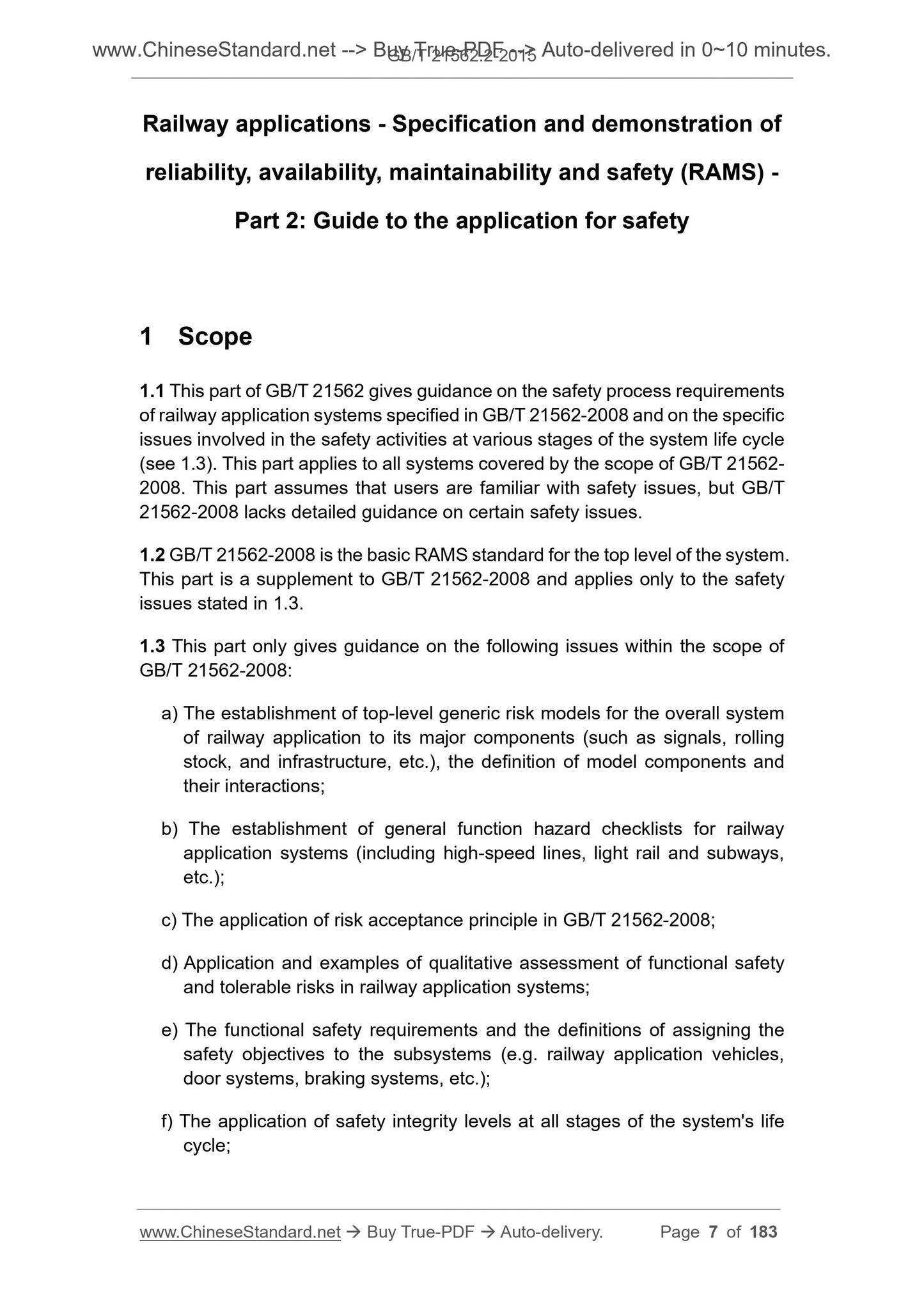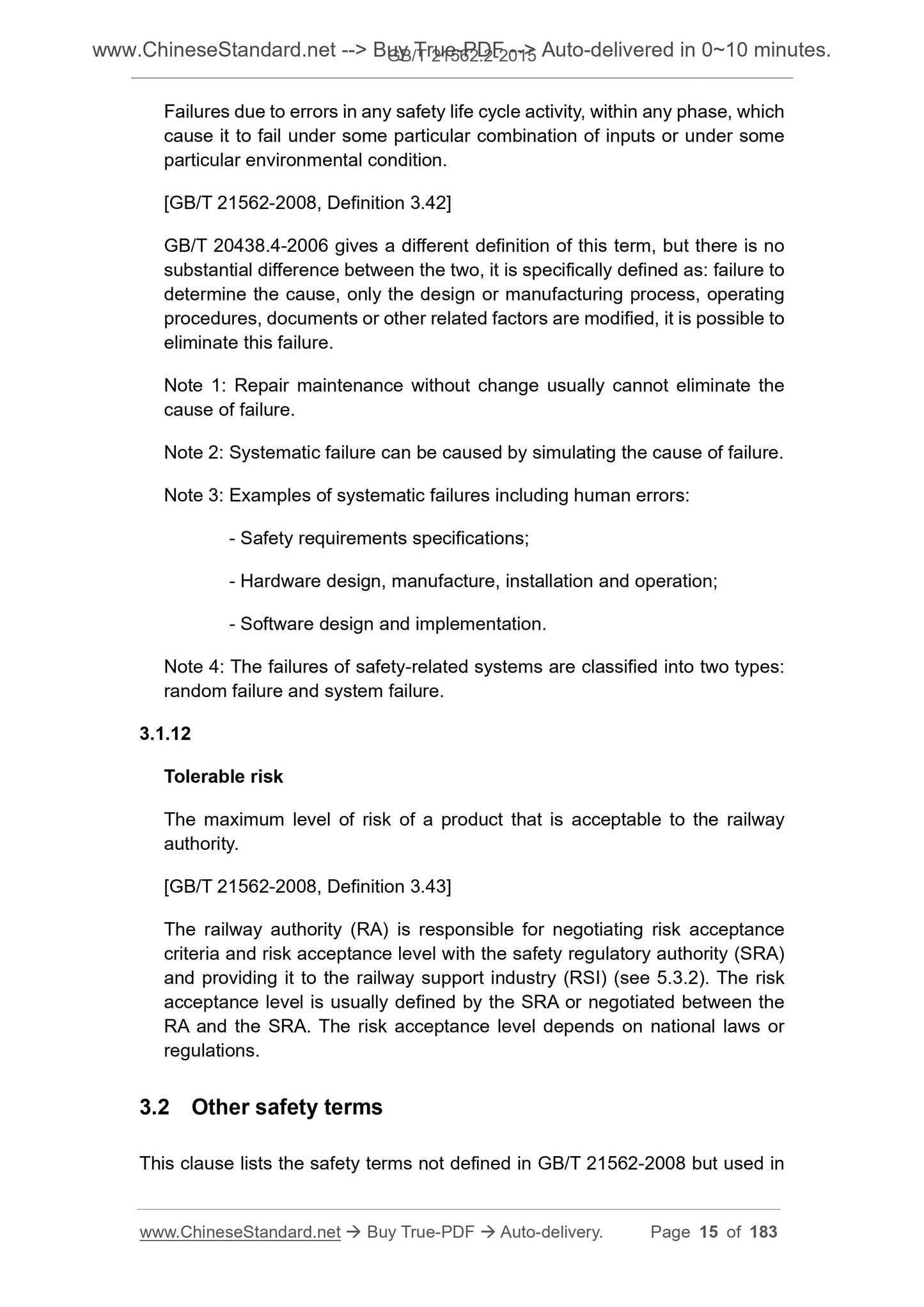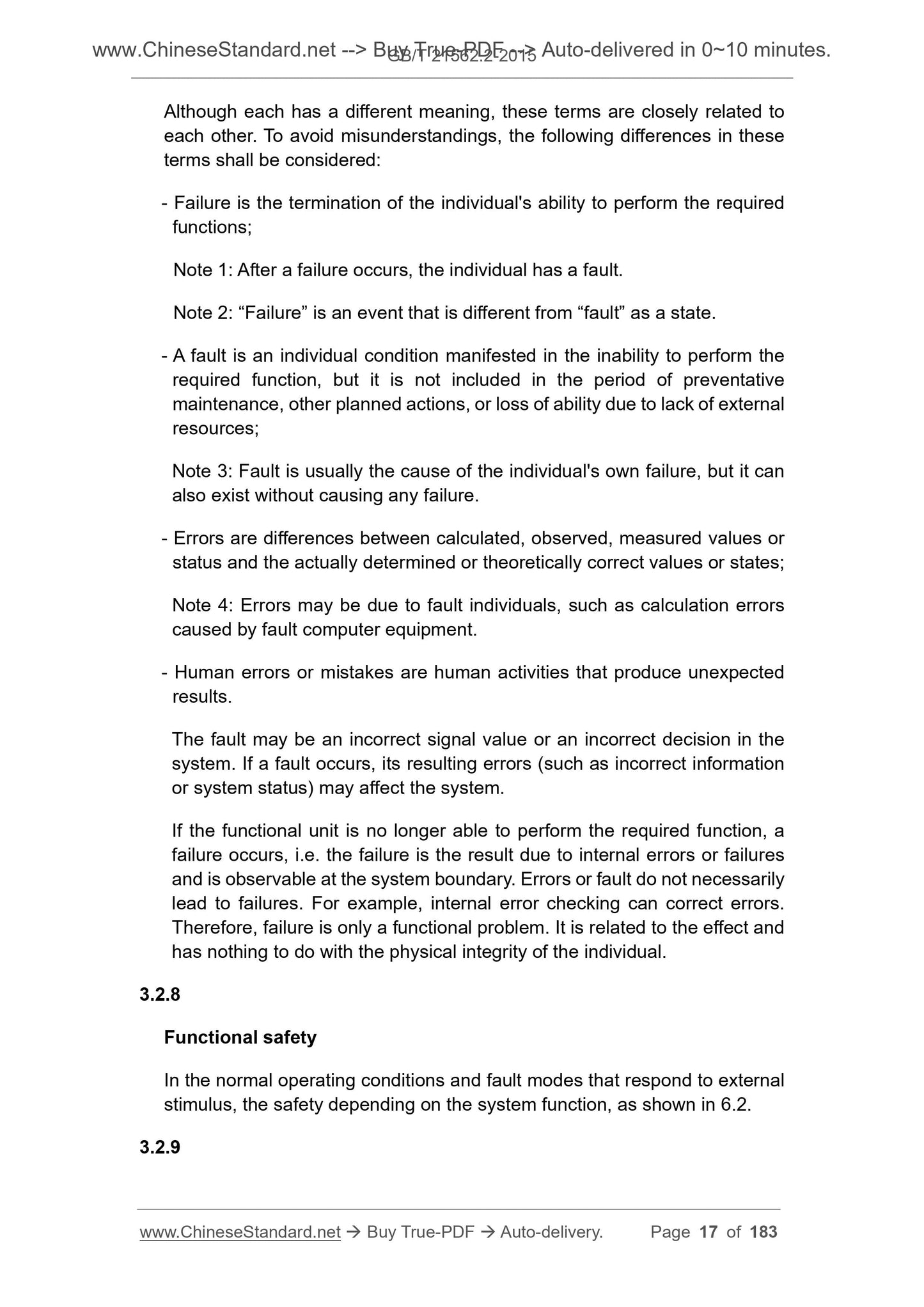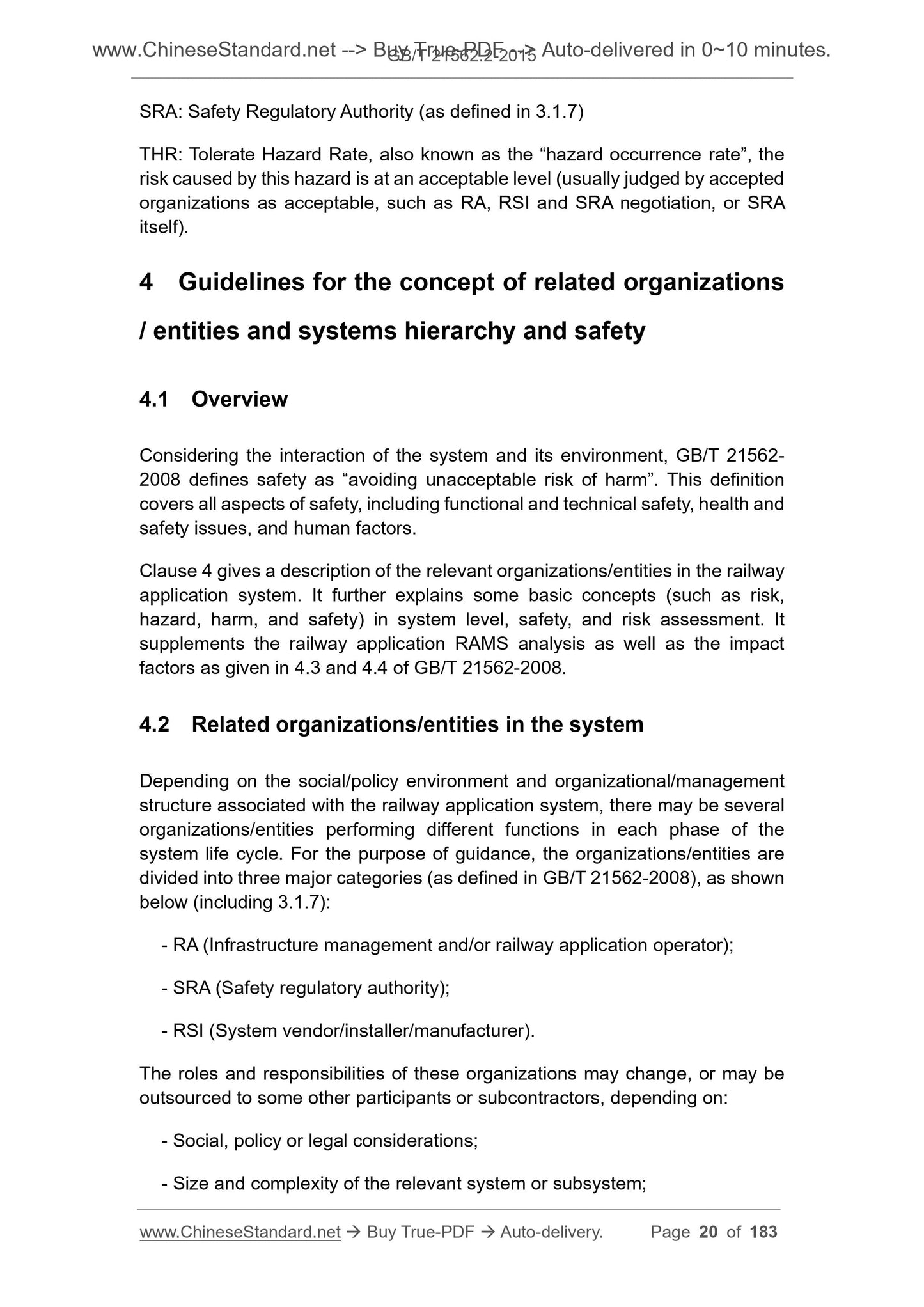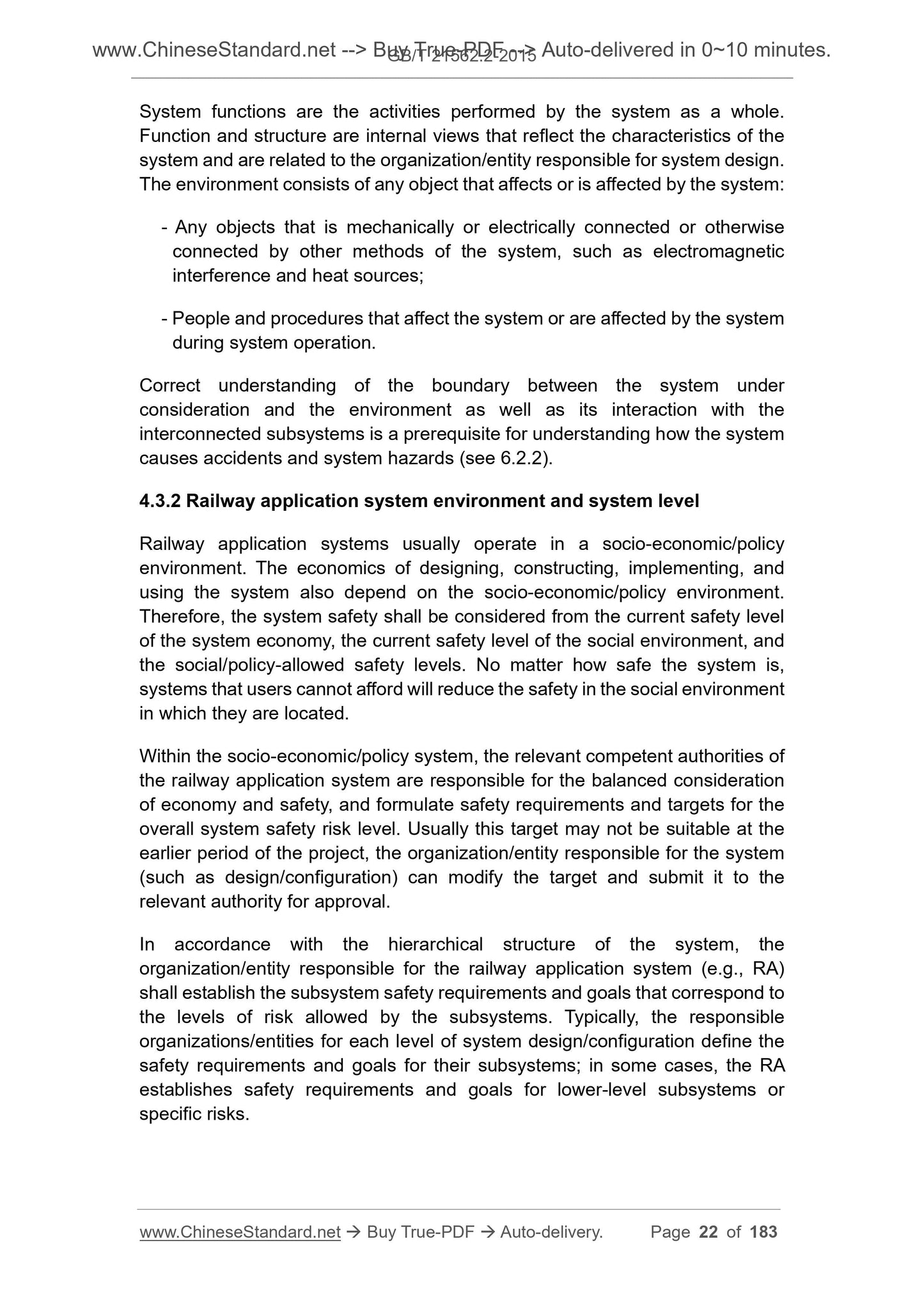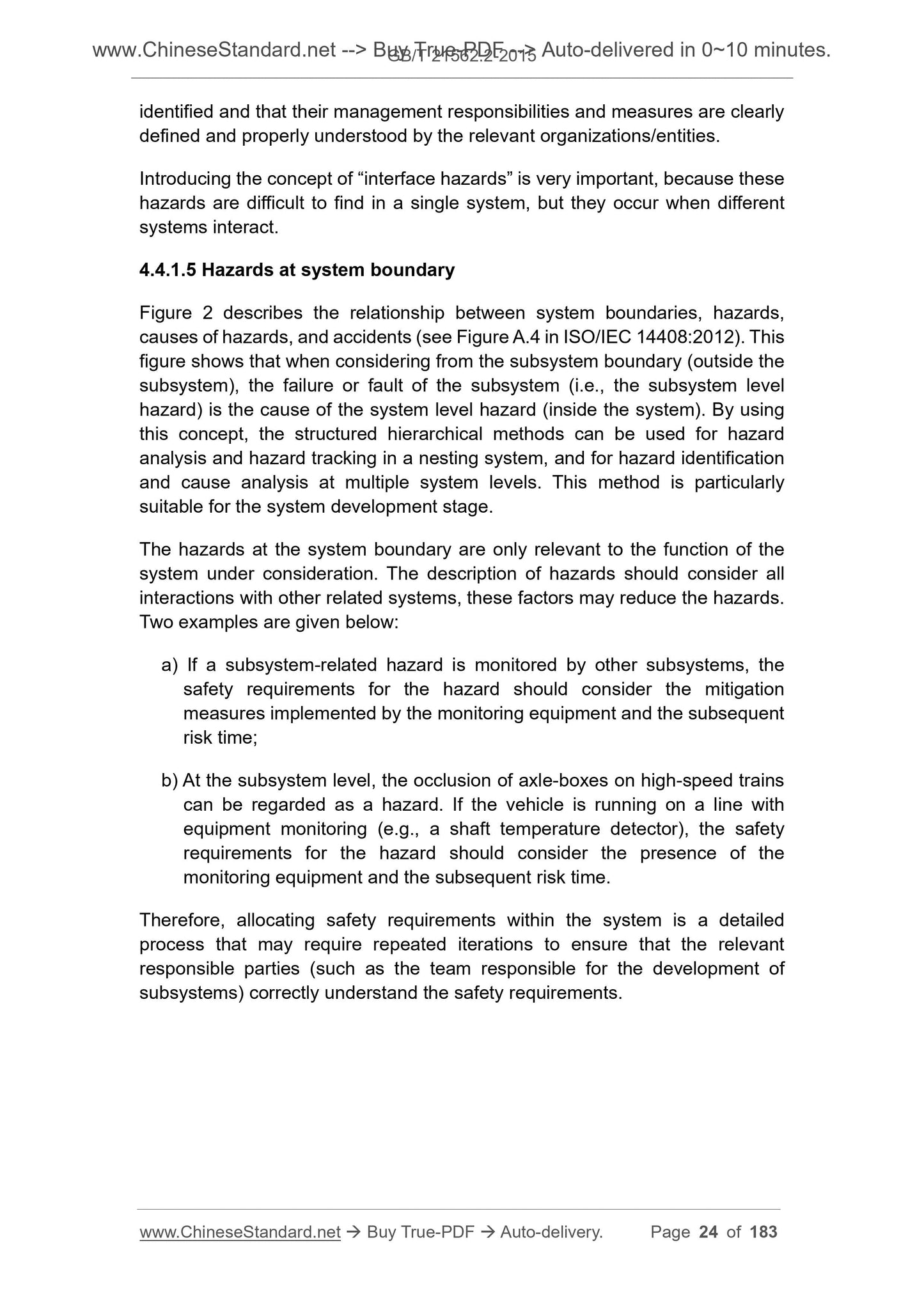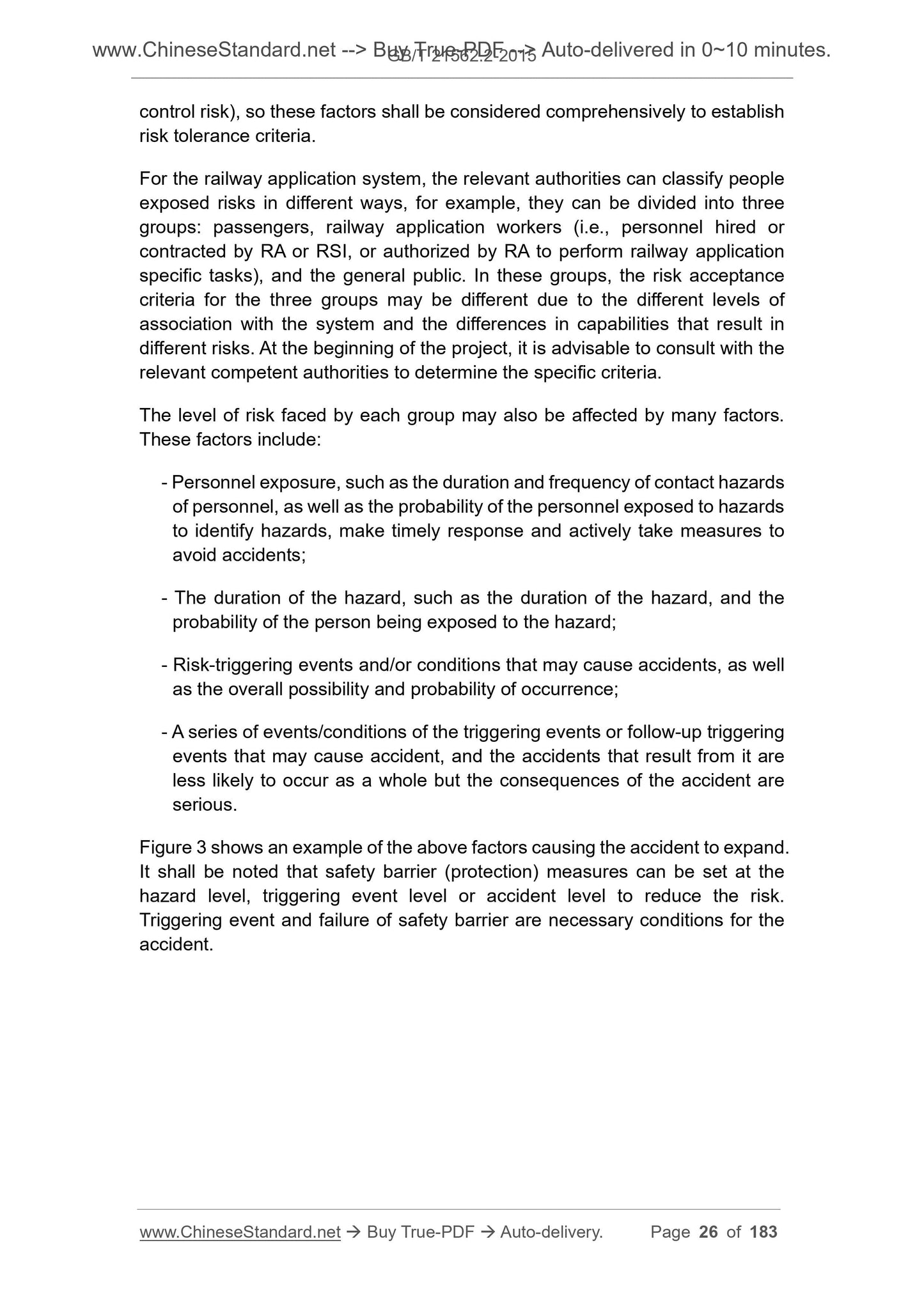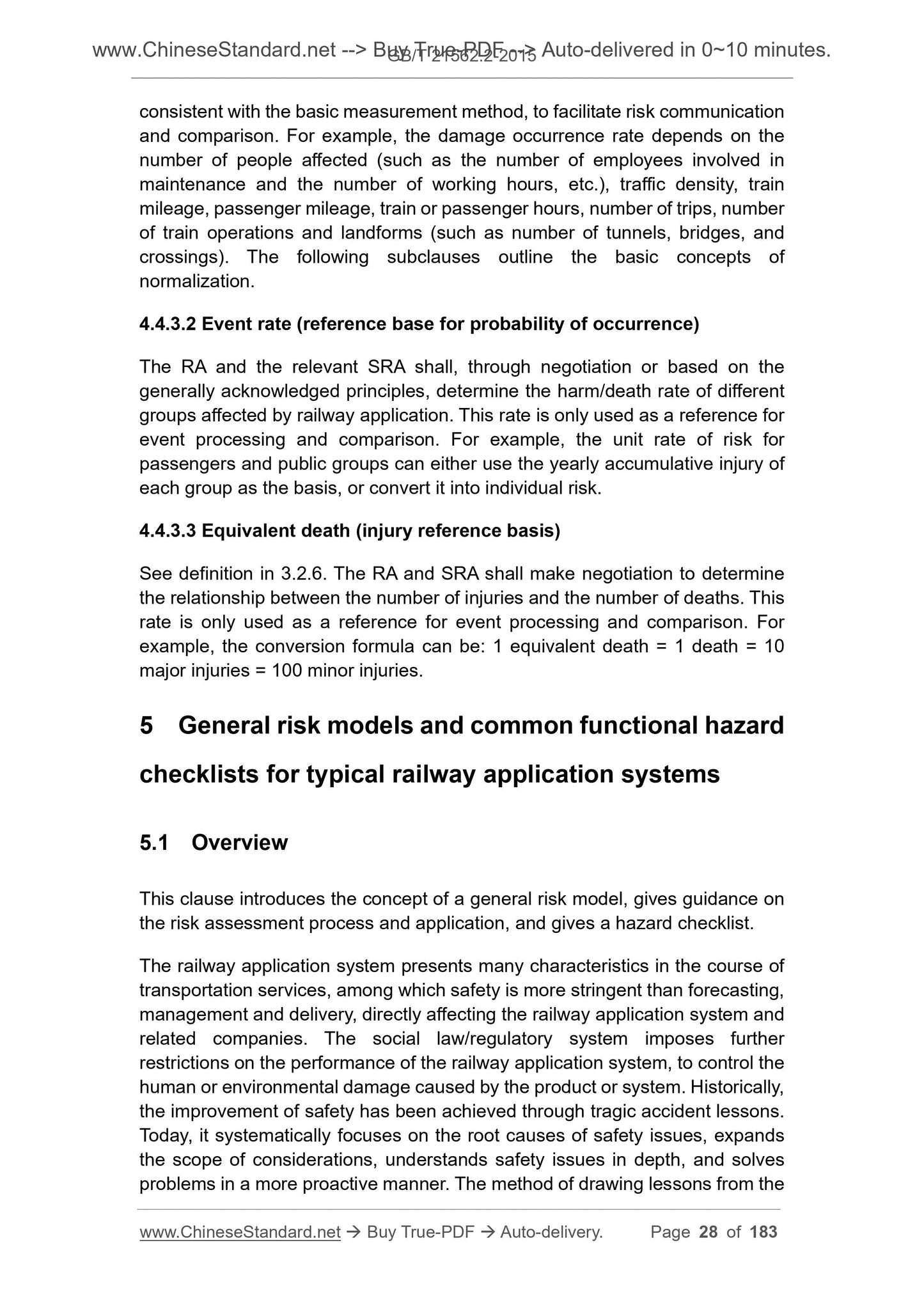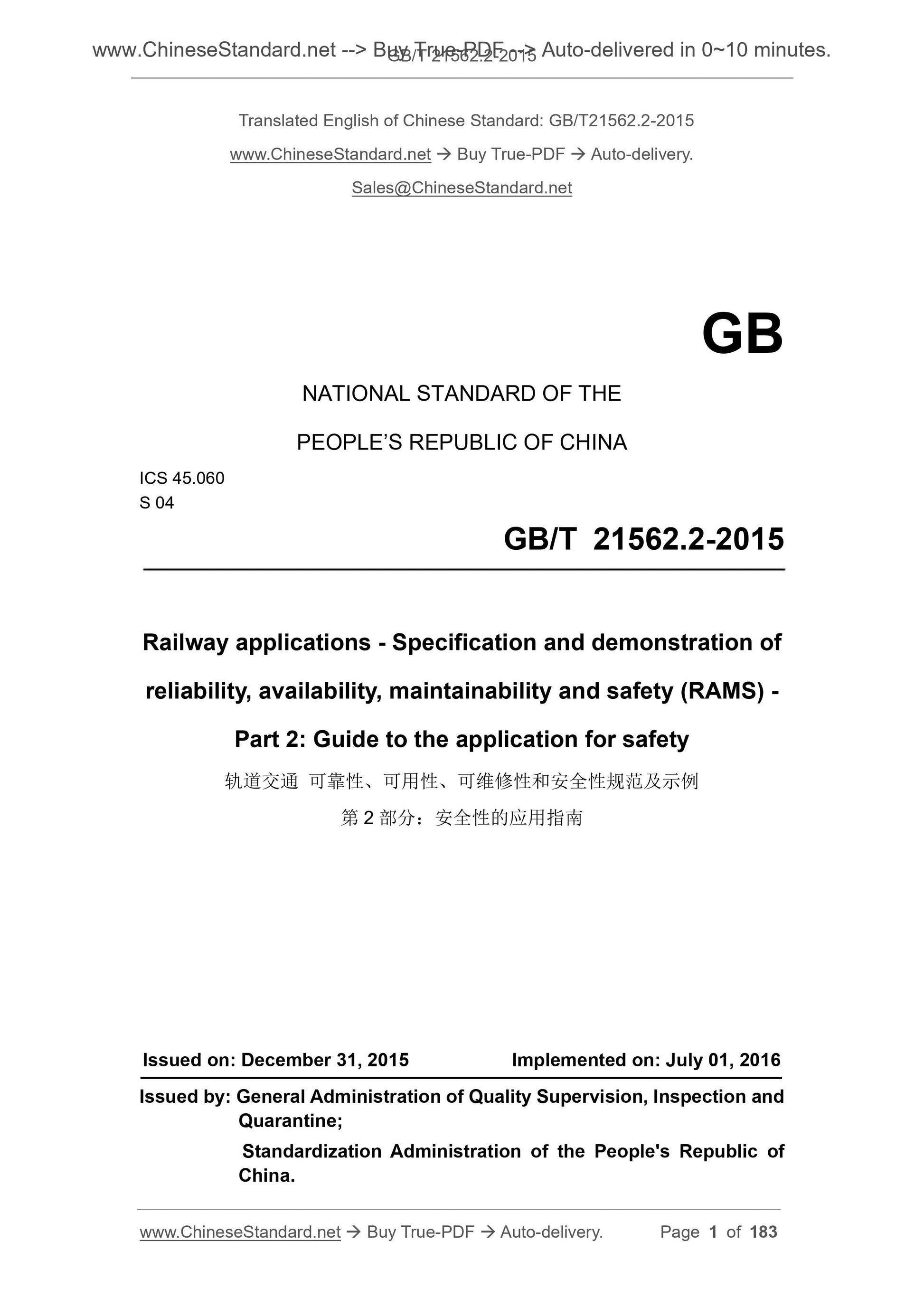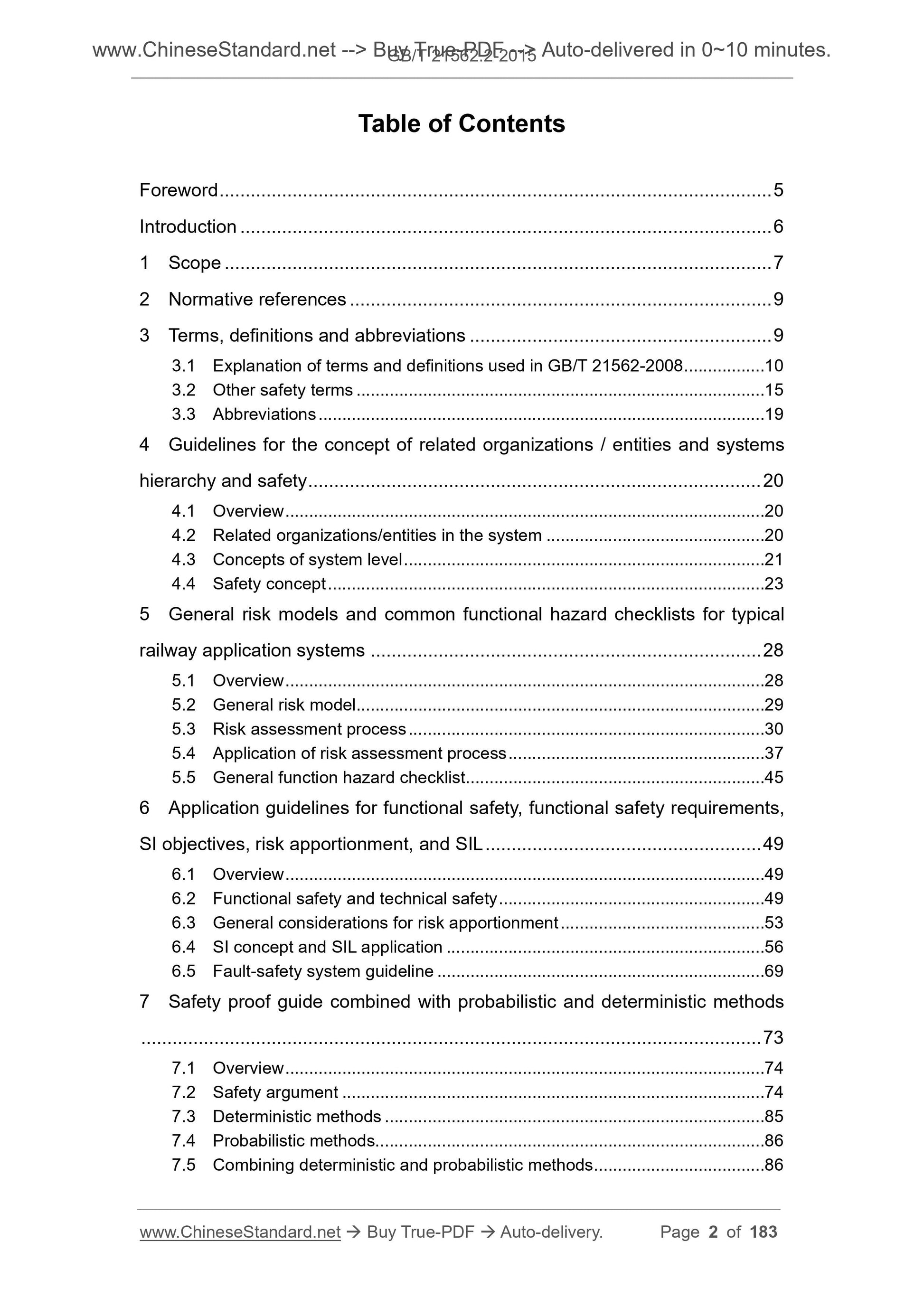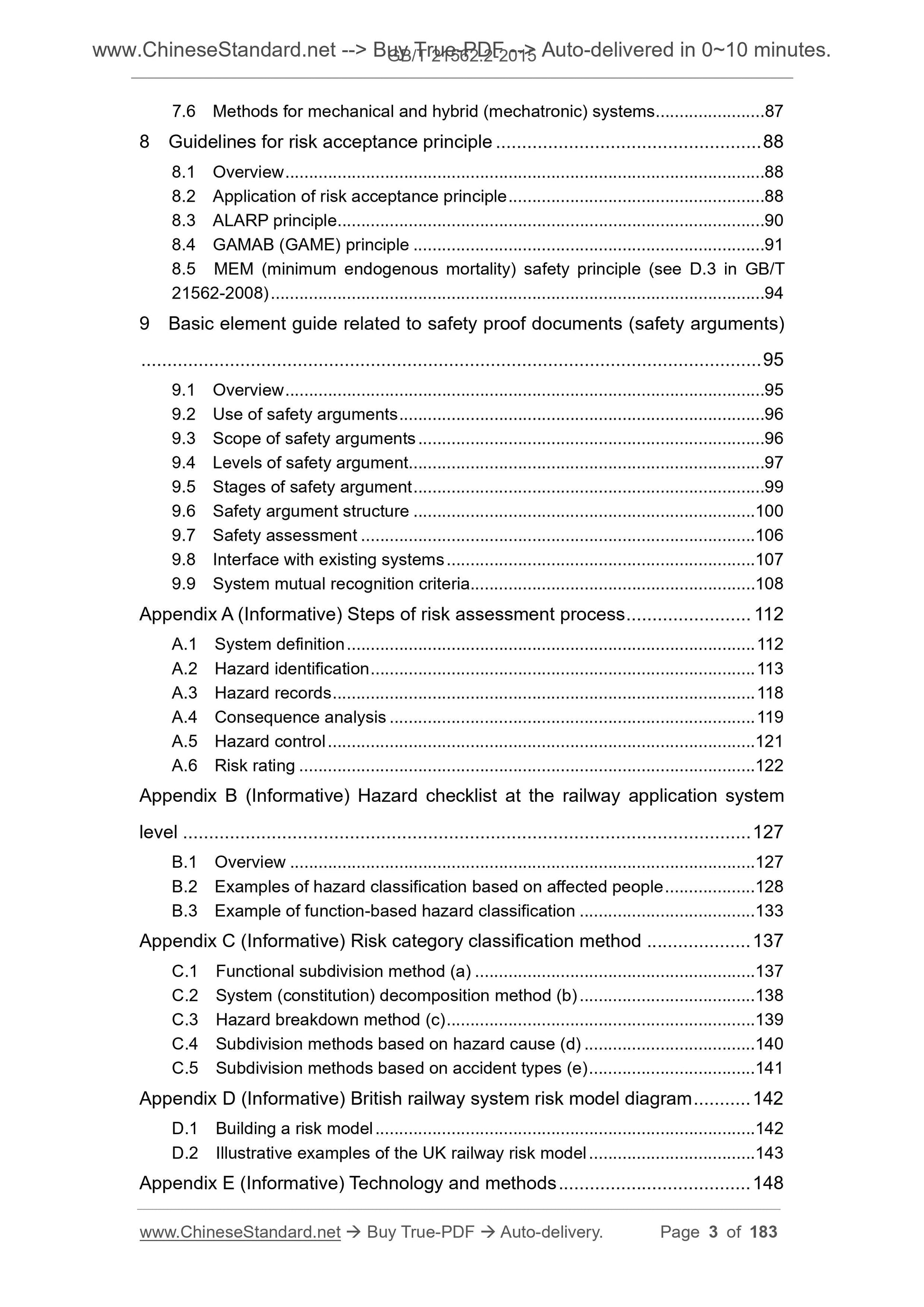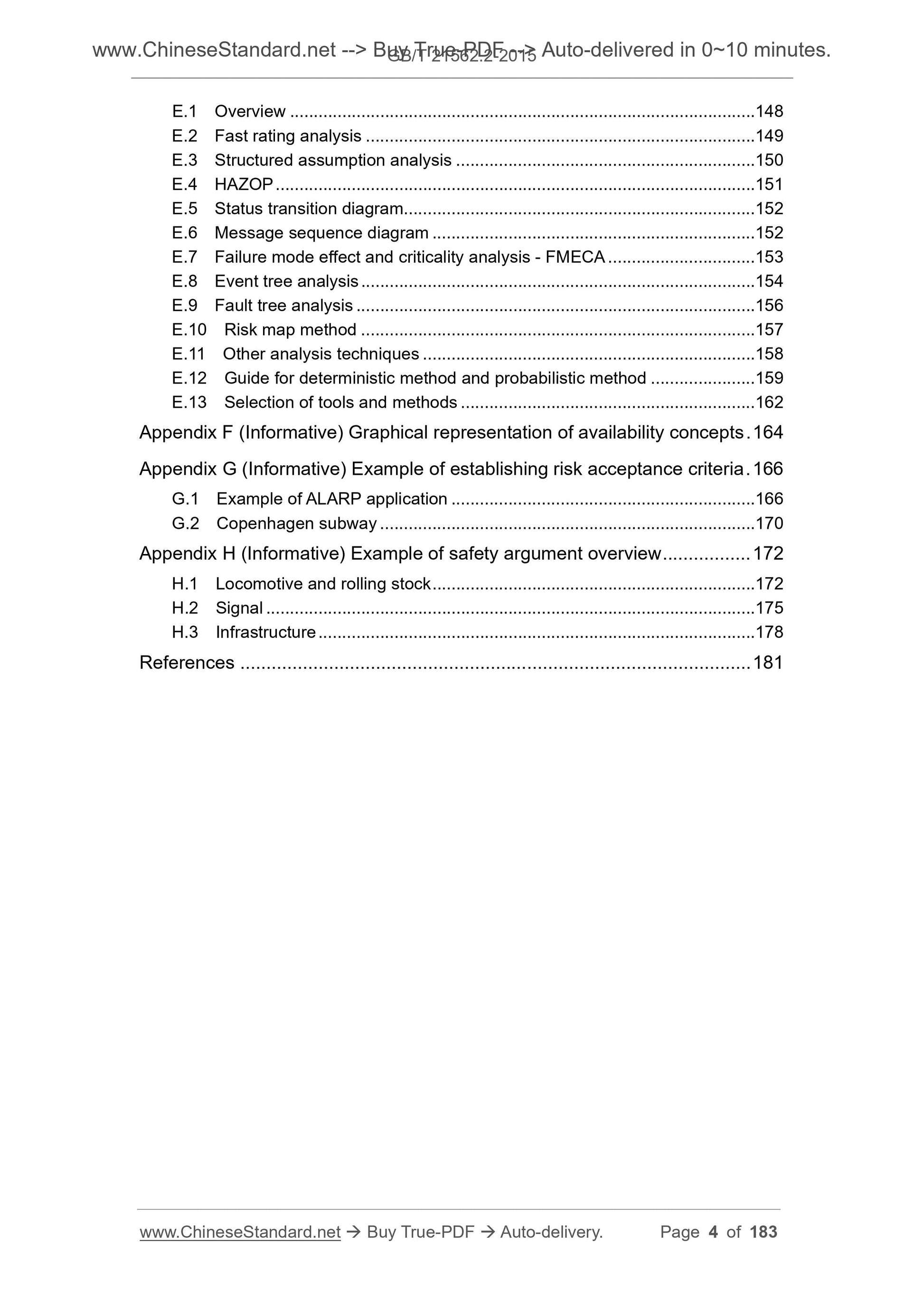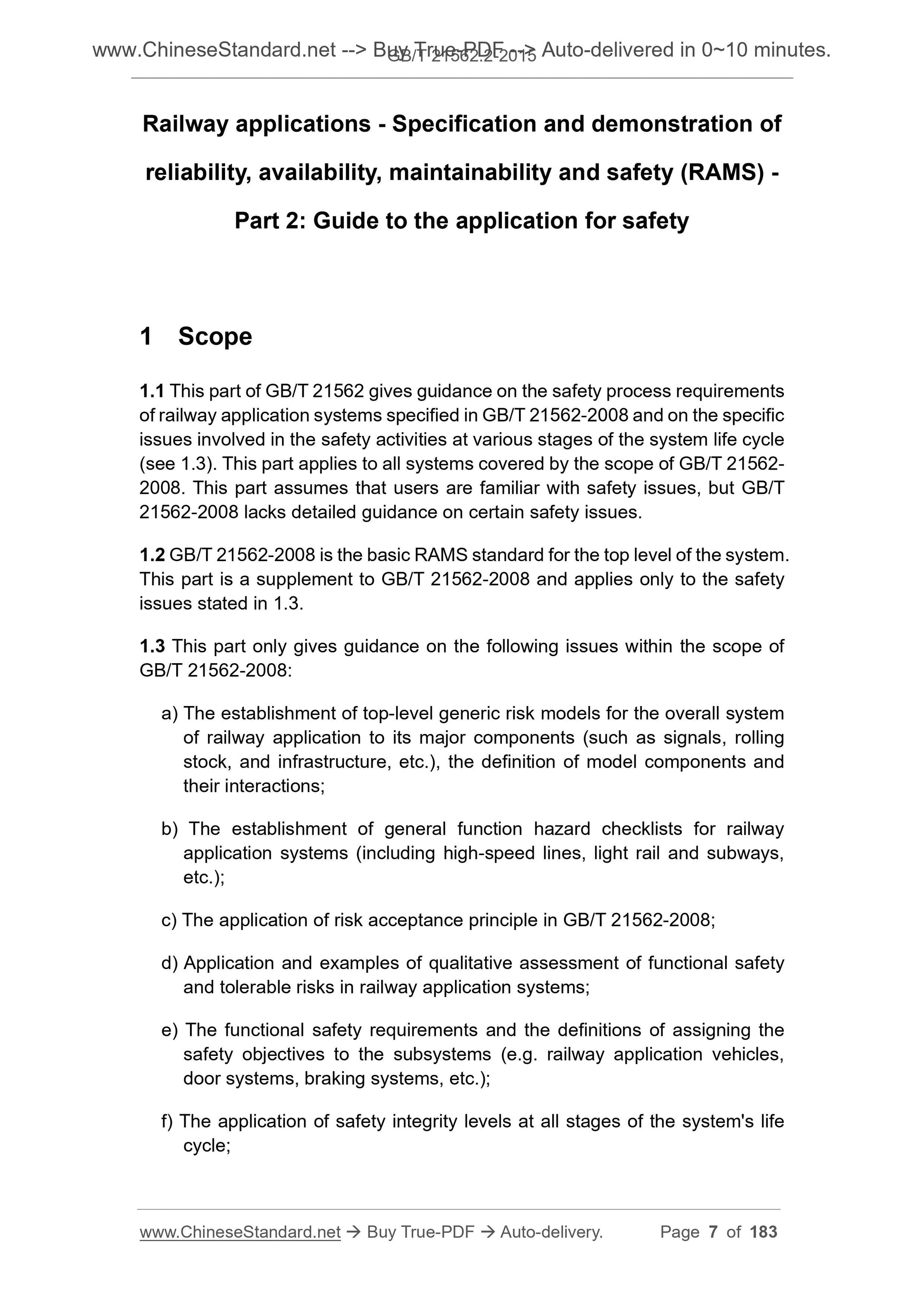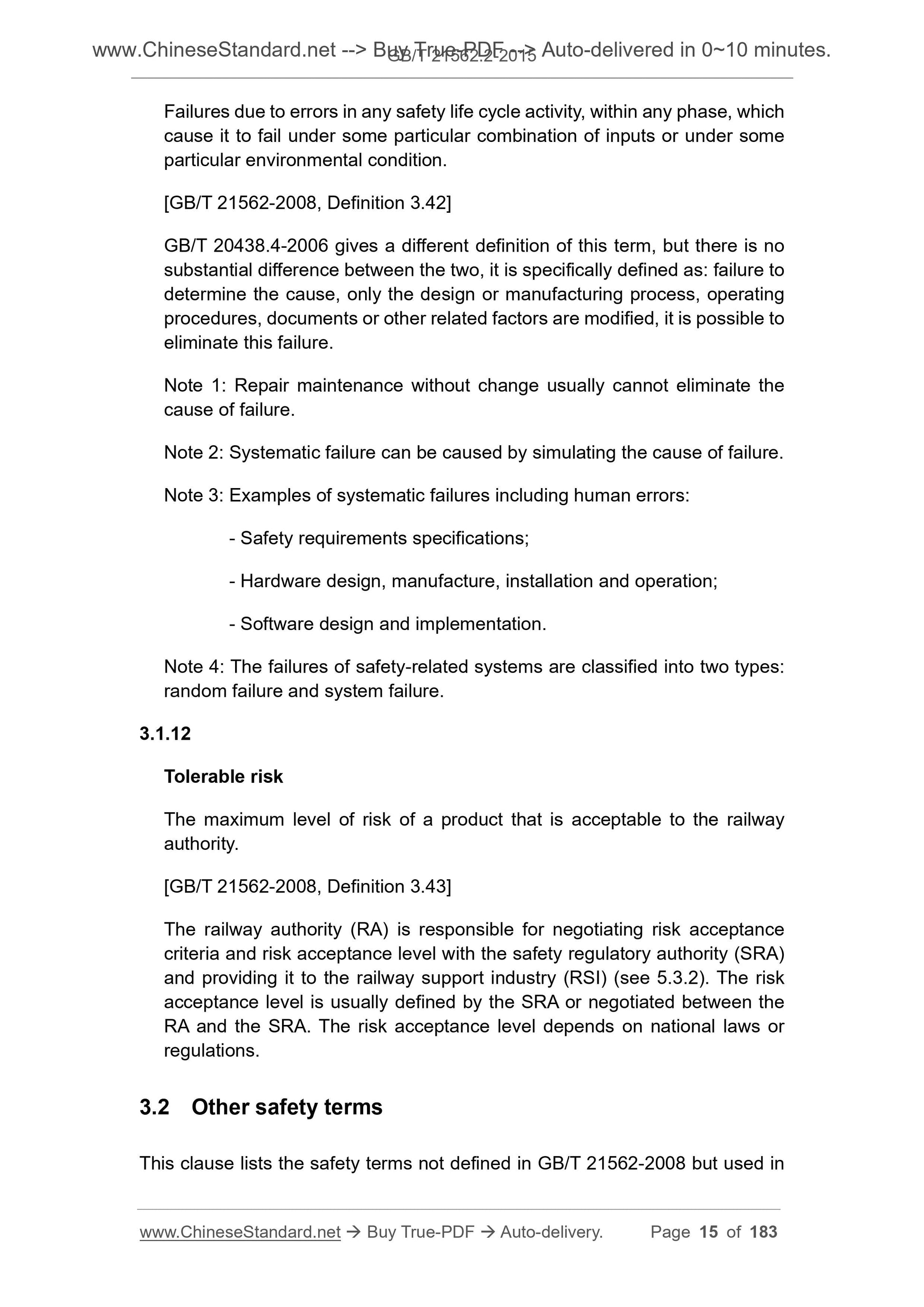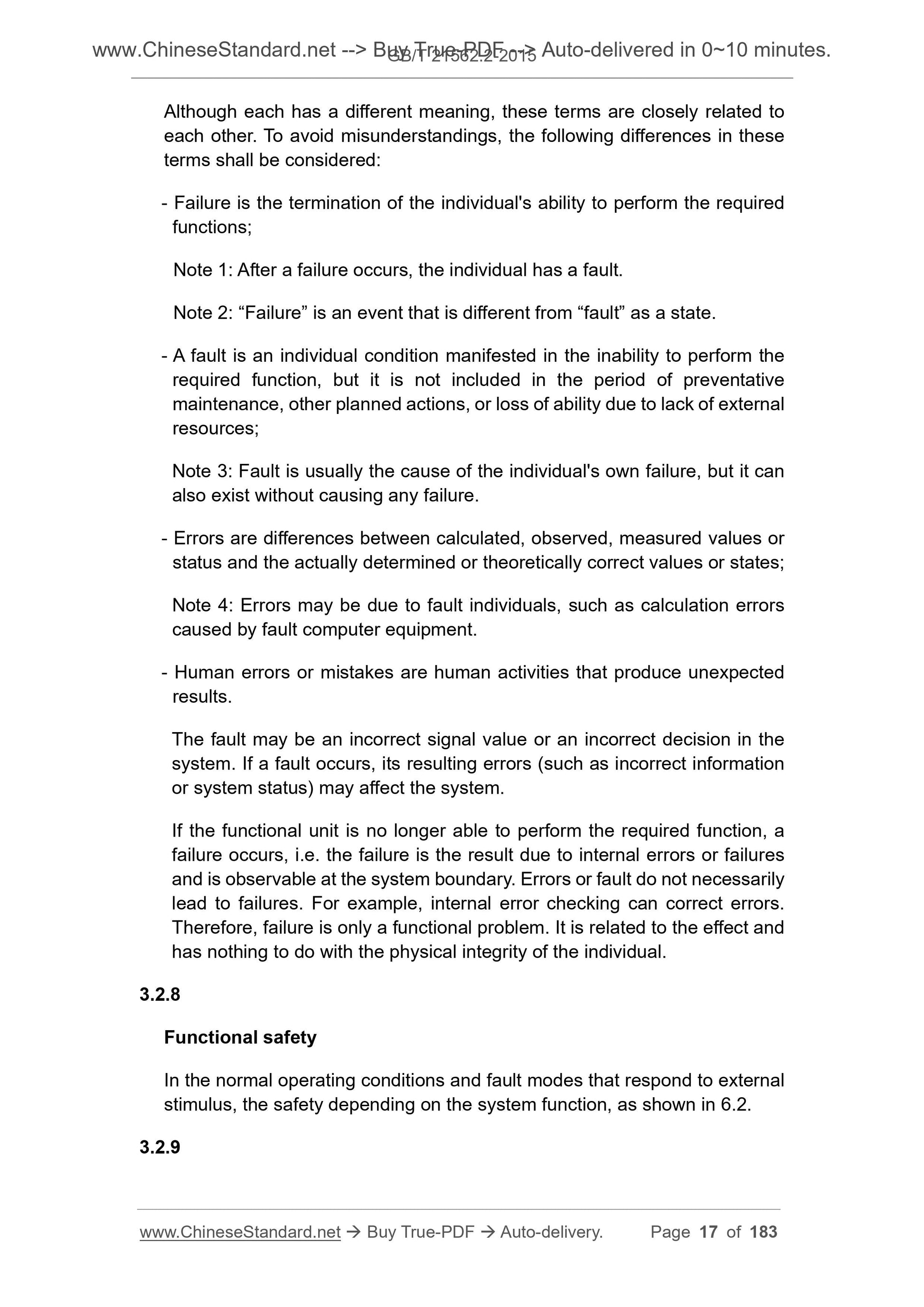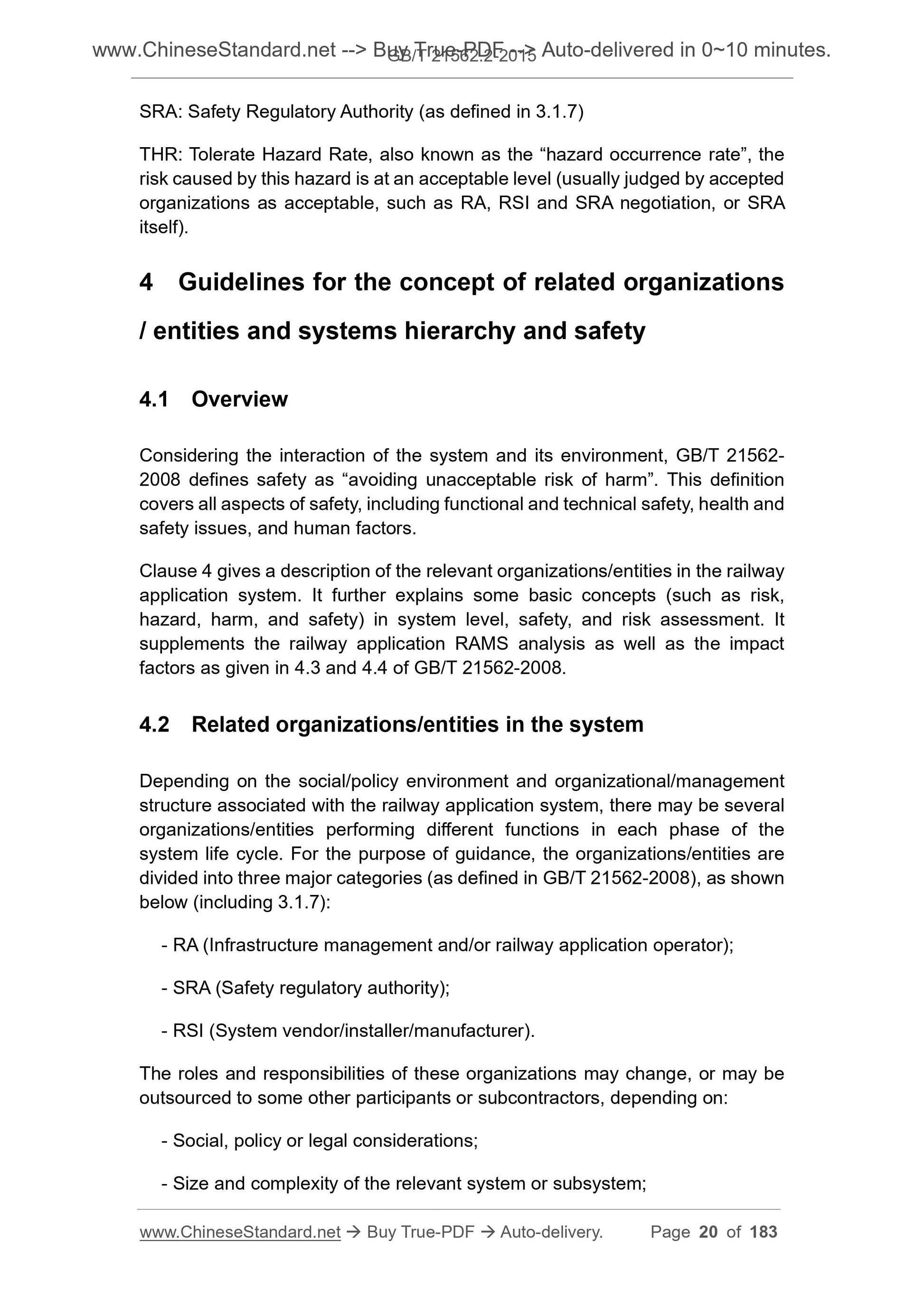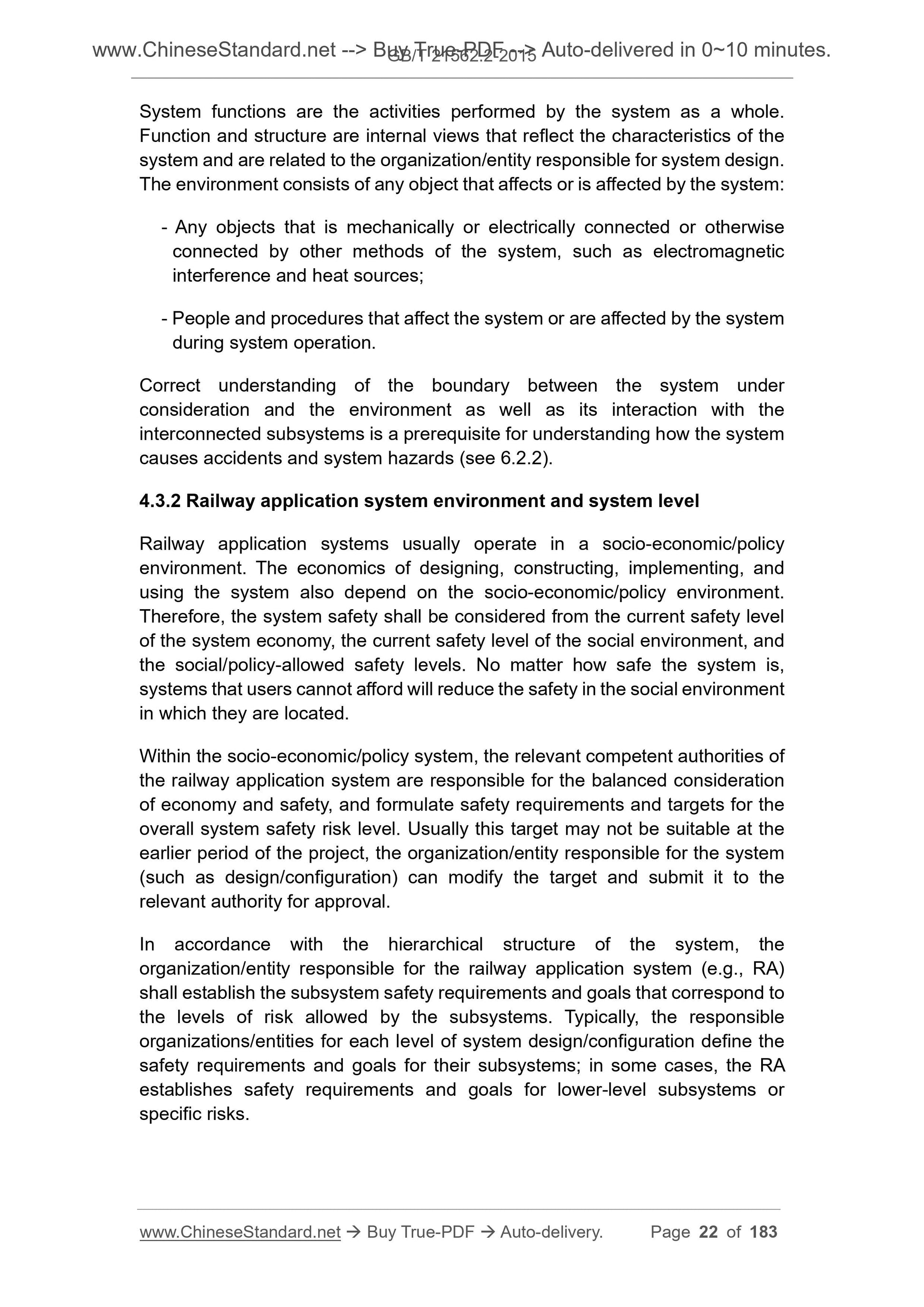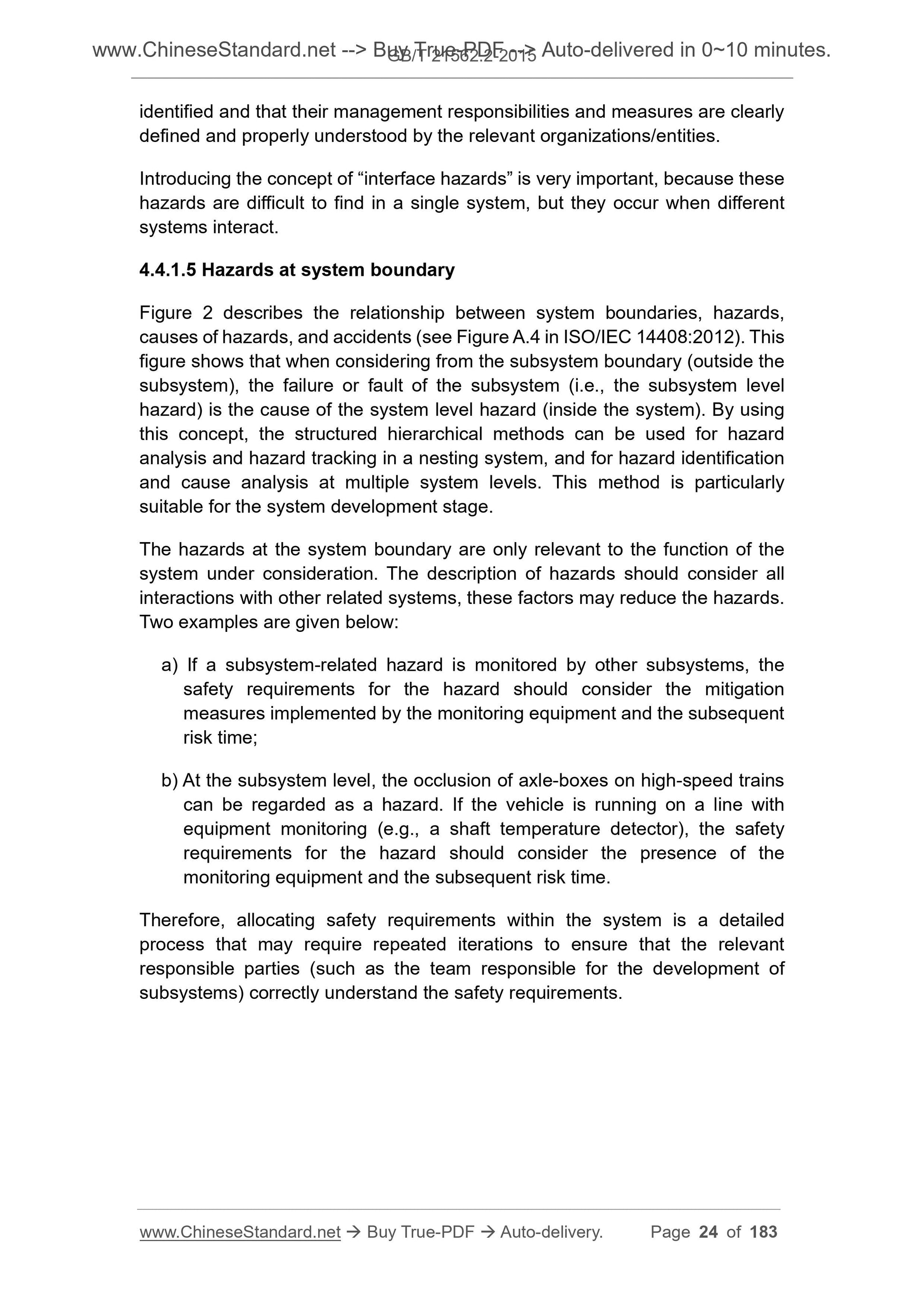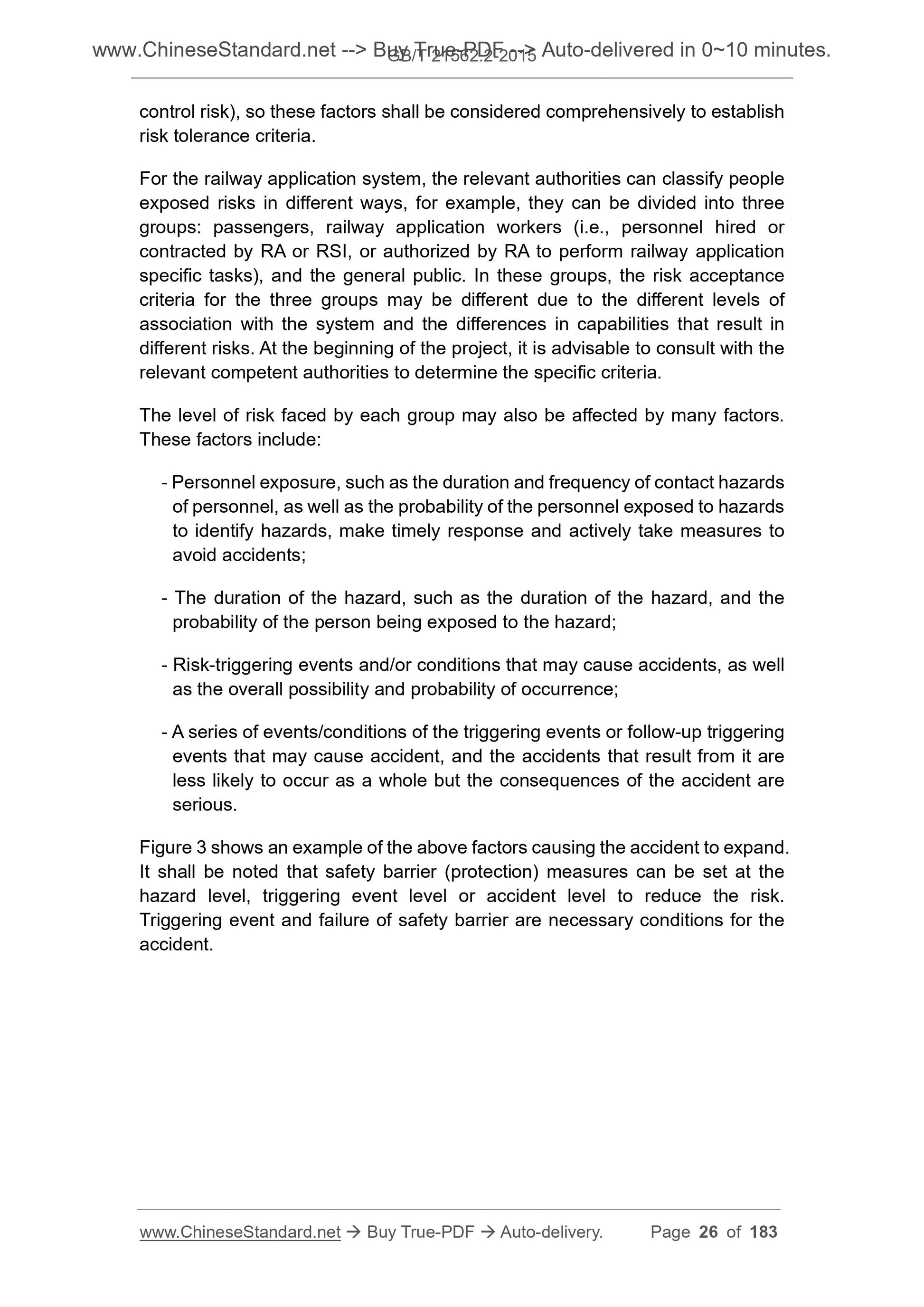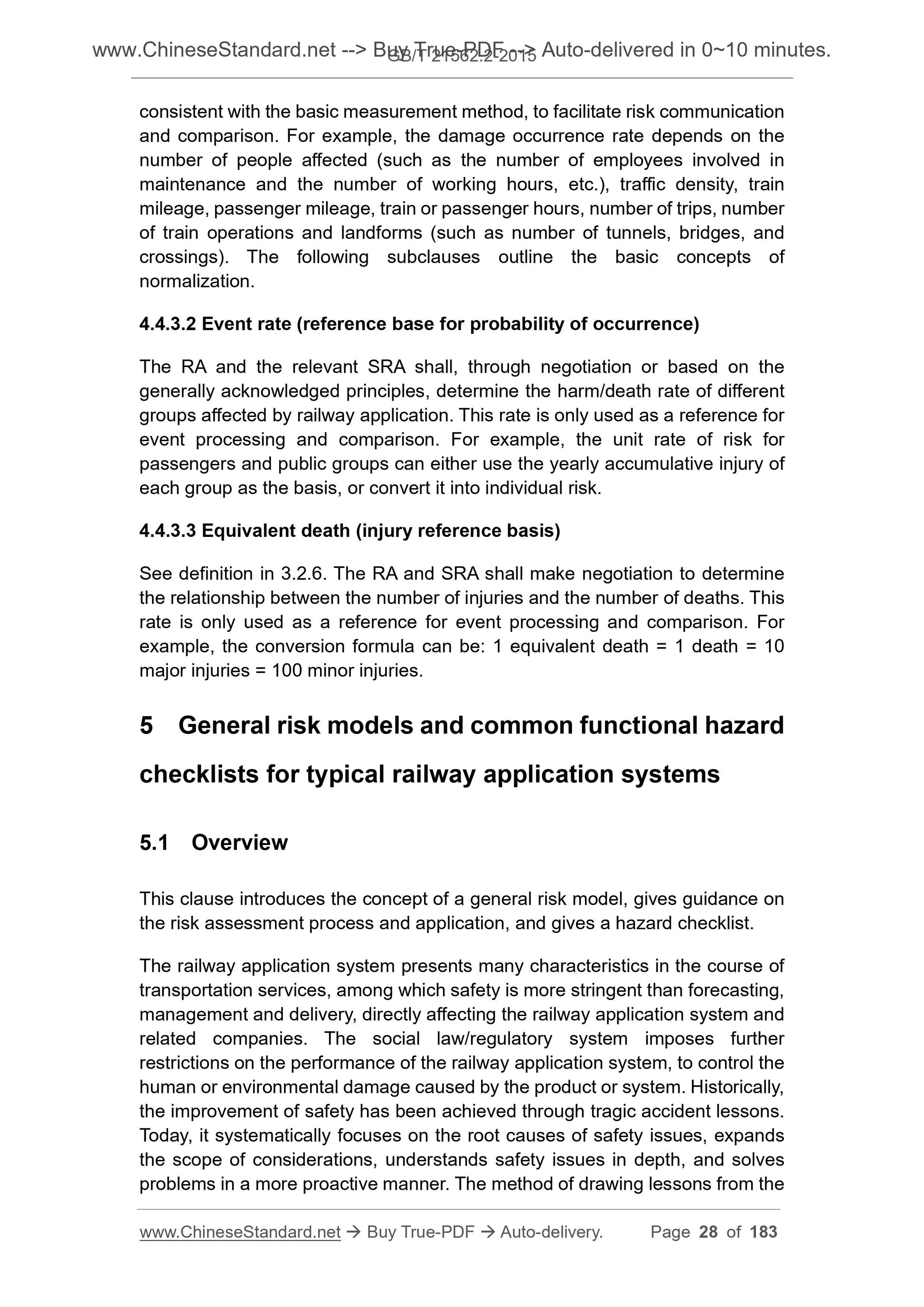1
/
of
12
www.ChineseStandard.us -- Field Test Asia Pte. Ltd.
GB/T 21562.2-2015 English PDF (GB/T21562.2-2015)
GB/T 21562.2-2015 English PDF (GB/T21562.2-2015)
Regular price
$500.00
Regular price
Sale price
$500.00
Unit price
/
per
Shipping calculated at checkout.
Couldn't load pickup availability
GB/T 21562.2-2015: Railway applications - Specification and demonstration of reliability, availability, maintainability and safety (RAMS) - Part 2: Guide to the application for safety
Delivery: 9 seconds. Download (and Email) true-PDF + Invoice.Get Quotation: Click GB/T 21562.2-2015 (Self-service in 1-minute)
Newer / historical versions: GB/T 21562.2-2015
Preview True-PDF
Scope
1.1 This part of GB/T 21562 gives guidance on the safety process requirementsof railway application systems specified in GB/T 21562-2008 and on the specific
issues involved in the safety activities at various stages of the system life cycle
(see 1.3). This part applies to all systems covered by the scope of GB/T 21562-
2008.This part assumes that users are familiar with safety issues, but GB/T
21562-2008 lacks detailed guidance on certain safety issues.
1.2 GB/T 21562-2008 is the basic RAMS standard for the top level of the system.
This part is a supplement to GB/T 21562-2008 and applies only to the safety
issues stated in 1.3.
1.3 This part only gives guidance on the following issues within the scope of
GB/T 21562-2008.
structures of safety demonstration documentation (safety arguments).
1.4 Table 1 illustrates the scope and limitations of the safety activities at various
stages of the life cycle as defined in GB/T 21562-2008, and defines the
roles/responsibilities of key players. It should combine all the contents of this
part for the in-depth understanding of Table 1.
Basic Data
| Standard ID | GB/T 21562.2-2015 (GB/T21562.2-2015) |
| Description (Translated English) | Railway applications - Specification and demonstration of reliability, availability, maintainability and safety (RAMS) - Part 2: Guide to the application for safety |
| Sector / Industry | National Standard (Recommended) |
| Classification of Chinese Standard | S04 |
| Classification of International Standard | 45.060 |
| Word Count Estimation | 111,126 |
| Date of Issue | 2015-12-31 |
| Date of Implementation | 2016-07-01 |
| Regulation (derived from) | State Standard Announcement 2015 No.43 |
| Issuing agency(ies) | General Administration of Quality Supervision, Inspection and Quarantine of the People's Republic of China, Standardization Administration of the People's Republic of China |
Share
